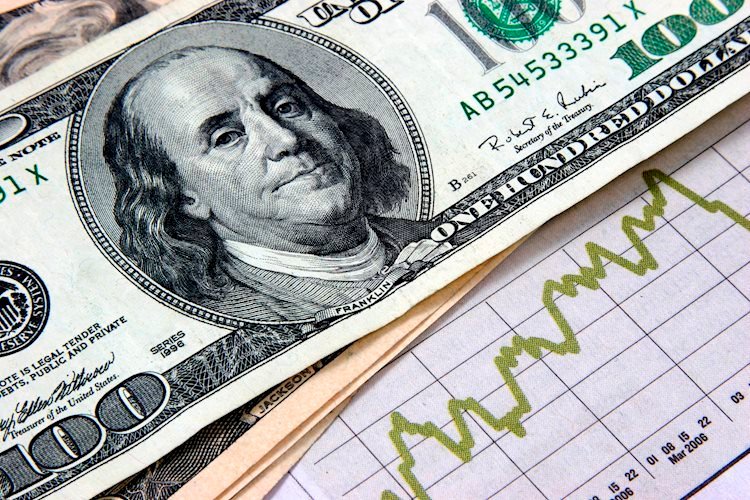Markets
It’s a Tilt-the-World week for global markets, starting with a seismic jolt in Japan. Prime Minister Shigeru Ishiba’s loss of a parliamentary majority has upended decades of political dominance by the Liberal Democratic Party, sending shockwaves through markets. This political earthquake could leave the yen and the Nikkei reeling, with local investors diving into Japanese Government Bonds as a safe- haven amid the uncertainty. As traders grapple with the fallout, bets on a Bank of Japan rate hike could be pushed even further out as political instability reshapes the policy outlook.
Political turbulence in Japan is merely the appetizer, nudging global investors closer to the edge as they brace for a week that could reshape the investment landscape. With a storm of major events looming, the stakes couldn’t be higher. Five of the “Magnificent Seven” U.S. tech giants are set to report earnings, while Friday’s U.S. nonfarm payrolls will be under a microscope. But what’s really keeping traders on edge? The nail-biting U.S. election, with Trump gaining ground in betting markets and polls across key “Blue Wall” states, is starting to flash red. Last week’s 1% slip in the S&P 500 might be a mere ripple before the storm hits—get ready; it’s about to get intense.
The battleground of undecided voters holds powerful sway over swing states, especially among urban households where economic security tops the priority list. Trump’s recent uptick in economic “trust” polls adds momentum to his campaign. If the November 1 payroll report disappoints, potentially offsetting September’s substantial gains, it could intensify “Red Wave” sentiment. To complicate matters, the usual “bad news is good news” playbook might not spark the typical market optimism this time as investors wrestle with intensified election risks.
Troubling signs are emerging for the Democrats as the October Nonfarm Payrolls (NFP) could bring some serious payback on the jobs front. Consensus estimates call for a modest 110,000 gain, but there’s the buzz about a potential negative surprise. The unemployment rate is expected to remain at 4.1%, with wage growth increasing by 0.3%. A weaker-than-expected jobs report could stoke political tension in an already charged environment, amplifying the landscape that’s as contentious as it is uncertain.
Finding a Silver lining among the geopolitical thunderheads
Crude oil futures plunged 5% at the open as Israel’s much-anticipated airstrikes on Iran swerved away from critical oil infrastructure, deflating the geopolitical risk premium that’s been holding up oil prices. If tensions cool further or peace talks unexpectedly gain traction, we could see oil slide down to $60 per barrel as traders shift focus back to the looming 2025 supply glut—especially if China’s economic stimulus underwhelms.
Naturally, we’ll likely see an initial wave of dip buying as oil traders slip into “don’t look a gift horse in the mouth” mode, snapping up bargains on this pullback. Meanwhile, the underlying bid that fueled Asia’s markets last week—spurred by China’s stimulus might hold today.
Israel’s strike, carefully avoiding energy sites, has softened fears of a full-scale conflict with Iran. Even more telling is Iran’s response, downplaying the attack’s impact and signaling that its warnings may have deterred any more aggressive action from Israel. This sets up a potential ongoing deflation in oil’s risk premium over the coming days. Frankly, the timing couldn’t be better: a pullback in oil prices could relieve some pressure from U.S. bond yields as traders begin recalibrating inflation expectations.
Setting the US market stage
Last week, equity markets took a careful hiatus, with the S&P 500 dipping a modest 1% as traders prepared for the high-stakes U.S. election ahead. With little economic data and no policy fireworks to fan growth, the market mood shifted to de-risking: bond traders began eyeing a post-election inflation surge. At the same time, equity investors held back, wary of record-high valuations running headfirst into soaring bond yields. But don’t be deceived—calm is nowhere on this week’s agenda. Investors are bracing for blockbuster tech earnings, a pivotal jobs report, and the nail-biting election itself. Trump’s odds are climbing across betting markets and key “Blue Wall” state polls, stirring up an incendiary market climate. The stage is set for a whirlwind week, and severe action could be ahead.
Black Swan currency tail risks
Across the Pacific, Asia’s central banks face a high-stakes dilemma should Trump clinch the election and make good on his bold 60% tariff on Chinese imports. With limited tools at hand, China—the economic anchor of the region—has two main cards to play: it can devalue the yuan to keep exports competitive or turn to a hefty fiscal stimulus to boost domestic demand, the scale of which remains an election-season mystery. But this potential dollar rally is like a lit fuse for Asia: a 60% tariff could demand a jaw-dropping 30-45% yuan devaluation to restore trade balance, and if China takes the devaluation route, USD/JPY might not just inch upward but could rocket past 175. Historically, waves of unrelenting dollar strength have battered Asia, wiping out gains on local currency debt—the bedrock of Asia’s emerging markets. And it could feel like the final nail in the coffin for those nations saddled with hefty external debt in U.S. dollars.
In Europe, the fragile fiscal landscape looks bleak. The Eurozone—already battered by post-COVID debt constraints—has limited flexibility in turbulent times. Italy, Spain, and even France now face high debt levels that restrict stimulus, and if the U.S. were to impose even a 10% tariff on EU imports (or a 20% on Chinese goods), the dollar could soar as the euro tumbles by as much as 8-10%, perhaps brushing against parity.
The U.S. election is shaping up to be one of the most explosive market risks in years. Traders in Europe and Asia may have downplayed Trump’s chances, but that complacency vanished as hedge funds flooded D.C. for the IMF and World Bank meetings, where “truth bombs” began trickling out. Practically overnight, hedges sprang up across markets as Trump’s odds surged, powered by a pivotal shift in key “Blue Wall” state polls and a Grand Canyon-sized spike in betting odds.
I’ve seen my share of political rodeos, but this one feels like just the opening act. If Trump pulls off a win, we could be staring down a currency Black Swan—picture a dollar surge and a tidal wave of volatility crashing across global markets. Buckle up; this ride is about to get wild.



